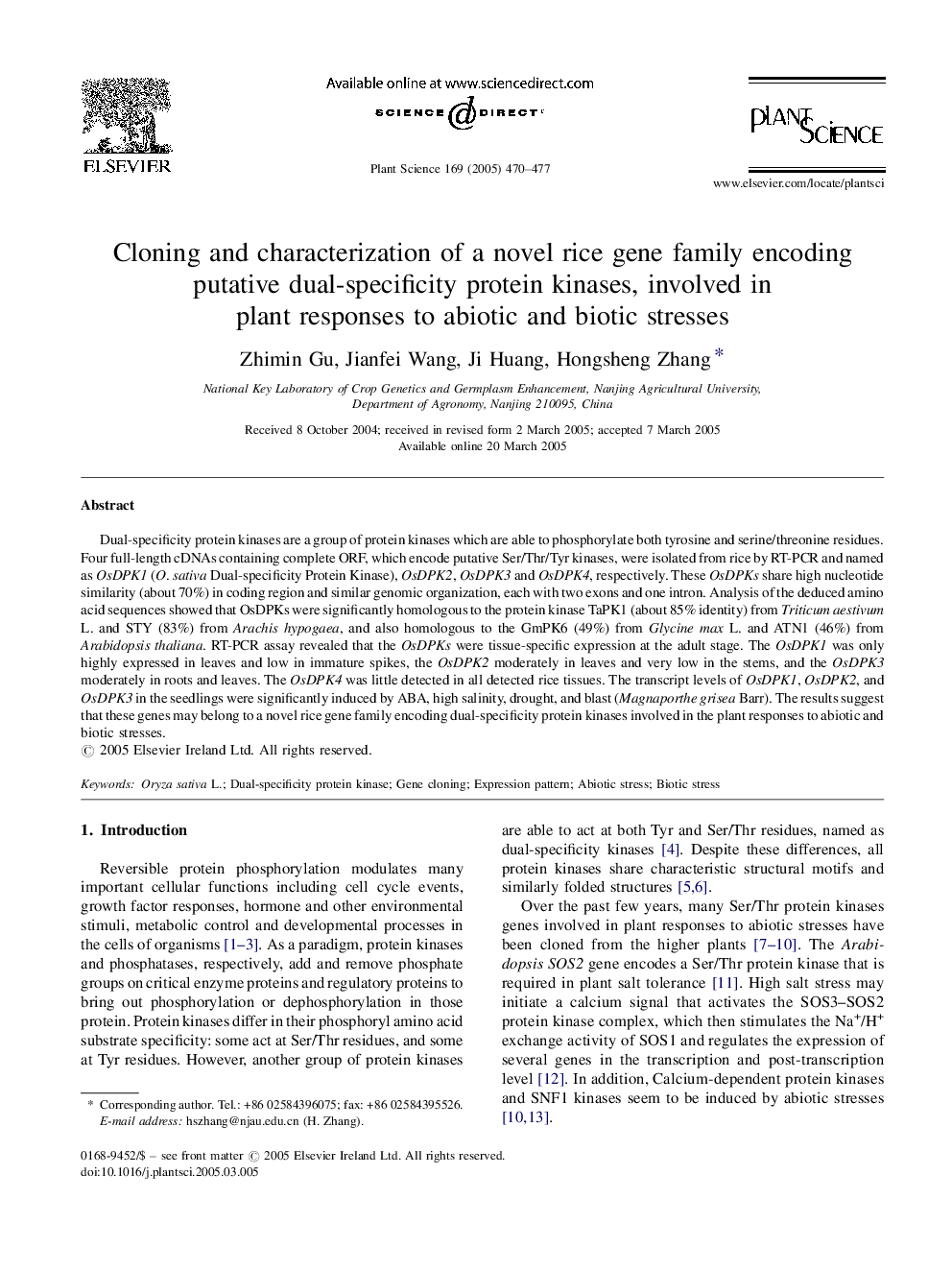| Article ID | Journal | Published Year | Pages | File Type |
|---|---|---|---|---|
| 10841042 | Plant Science | 2005 | 8 Pages |
Abstract
Dual-specificity protein kinases are a group of protein kinases which are able to phosphorylate both tyrosine and serine/threonine residues. Four full-length cDNAs containing complete ORF, which encode putative Ser/Thr/Tyr kinases, were isolated from rice by RT-PCR and named as OsDPK1 (O. sativa Dual-specificity Protein Kinase), OsDPK2, OsDPK3 and OsDPK4, respectively. These OsDPKs share high nucleotide similarity (about 70%) in coding region and similar genomic organization, each with two exons and one intron. Analysis of the deduced amino acid sequences showed that OsDPKs were significantly homologous to the protein kinase TaPK1 (about 85% identity) from Triticum aestivum L. and STY (83%) from Arachis hypogaea, and also homologous to the GmPK6 (49%) from Glycine max L. and ATN1 (46%) from Arabidopsis thaliana. RT-PCR assay revealed that the OsDPKs were tissue-specific expression at the adult stage. The OsDPK1 was only highly expressed in leaves and low in immature spikes, the OsDPK2 moderately in leaves and very low in the stems, and the OsDPK3 moderately in roots and leaves. The OsDPK4 was little detected in all detected rice tissues. The transcript levels of OsDPK1, OsDPK2, and OsDPK3 in the seedlings were significantly induced by ABA, high salinity, drought, and blast (Magnaporthe grisea Barr). The results suggest that these genes may belong to a novel rice gene family encoding dual-specificity protein kinases involved in the plant responses to abiotic and biotic stresses.
Related Topics
Life Sciences
Agricultural and Biological Sciences
Plant Science
Authors
Zhimin Gu, Jianfei Wang, Ji Huang, Hongsheng Zhang,
